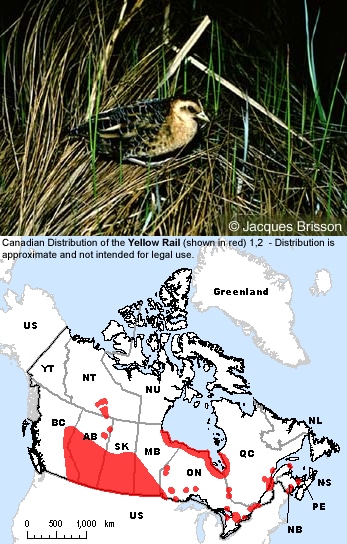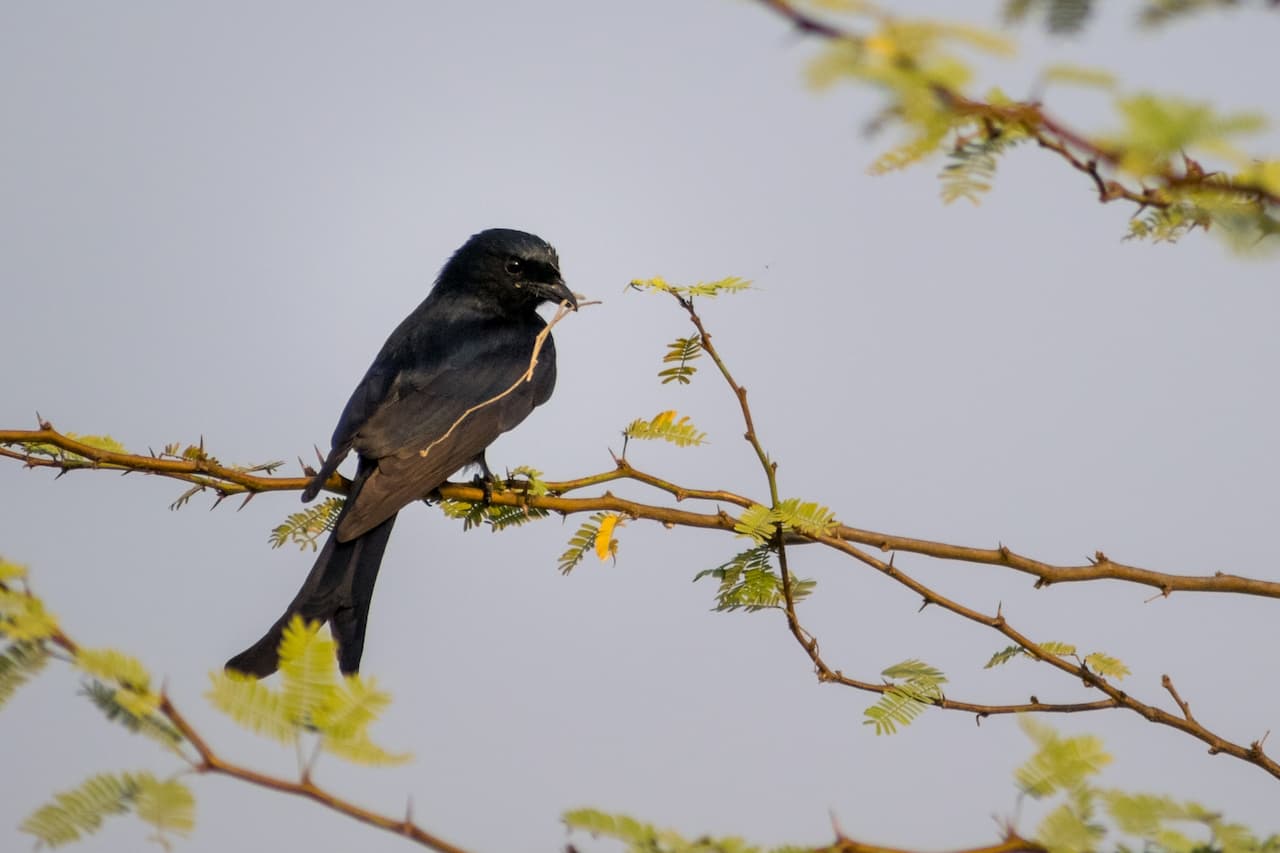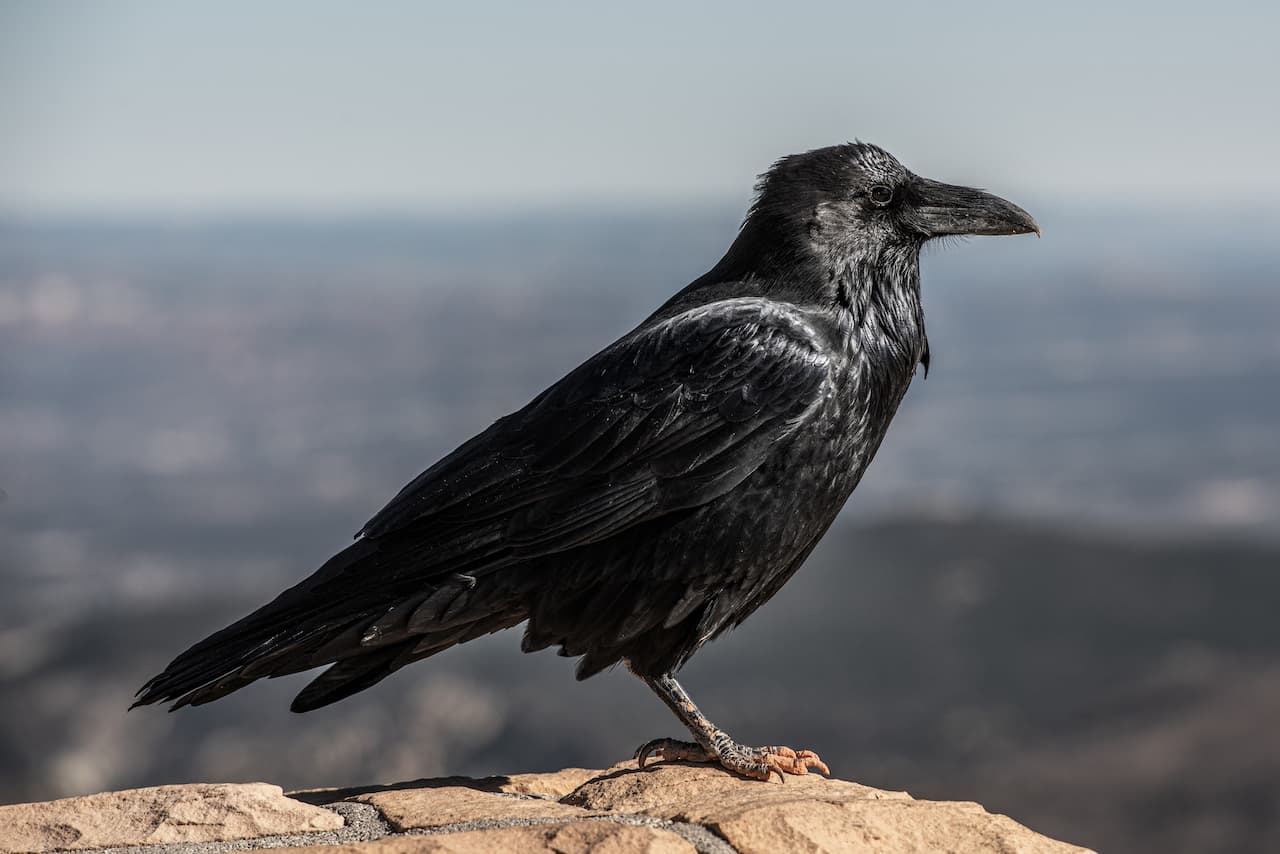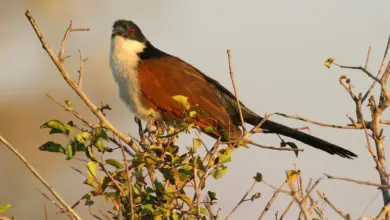Yellow Rails
Yellow Rails (Coturnicops noveboracensis)
The Yellow Rails, Coturnicops noveboracensis, — a small waterbird — is part of the Rallidae (rail) family.
Description:
The minute size, buffy plumage with black and white markings, very short tail, light eyebrow, and small bill of the Yellow Rail are reminiscent of a quail. It is one of the smallest rails in the world, weighing only 60 g (females slightly less), and measuring 15-19 cm in length.
A white wing patch is visible in flight. As in all rails, the body is laterally compressed, and the toes are long, adapted for maneuvering through aquatic vegetation.
Distribution / Habitat:
Except for a very small area in Mexico where a few birds may still breed, the Yellow Rail breeds exclusively in Canada and the northern U.S.
Its breeding distribution appears to be quite local and disjunct. It winters in the U.S., near the east coast from North Carolina to eastern Texas.
The Canadian breeding range includes the Mackenzie District of the Northwest Territories, eastern Alberta, central Saskatchewan, most of Manitoba and Ontario, the southern half of Quebec, all of New Brunswick, and northern Nova Scotia.
There are thought to be roughly a few thousand pairs of Yellow Rails breeding in the Hudson/James Bay region, and another roughly 2000 pairs in the rest of Canada (1998 estimates).
Habitat availability has declined and is still declining throughout its southern breeding range and relatively small wintering range. In certain parts of the Hudson/James Bay region, habitat may be declining as a result of habitat degradation by Snow Geese (Chen caerulescens).
Nesting Yellow Rails are typically found in marshes dominated by sedges, true grasses, and rushes, where there is little or no standing water (generally 0-12 cm water depth), and where the substrate remains saturated throughout the summer.
They can be found in damp fields and meadows, on the floodplains of rivers and streams, in the herbaceous vegetation of bogs, and at the upper levels (drier margins) of estuarine and salt marshes. Nesting habitats usually have a dry mat of dead vegetation from previous growing seasons. A greater diversity of habitat types is used during migration and winter than during the breeding season. In winter, the rails are known to use coastal wetlands and rice fields.
Population Estimates:
| stable | 2,500 to 1,000,000 individuals | 2006 |
Breeding / Nesting:
Yellow Rails probably start breeding when they are a year old. Pair formation likely occurs on the breeding grounds. Males in the wild may breed successively with two or more females, as observed in captivity. Females have only one brood per season, but they may renest if the first clutch of eggs is not successful. The nest is a crude scrape in the vegetation, on the ground, or just a few centimetres above it, and is typically covered with a concealing canopy of dead vegetation.
The 7-10 eggs are laid a day apart. Once the clutch is complete, the female incubates the eggs until they hatch some 17-18 days later.
Hatching is synchronous (all eggs hatch at about the same time), and within a few hours, the semiprecocial young can stand. Hatching success is likely very high. Two days after hatching, the entire brood follows the hen away from the nest, at five days of age the young can feed themselves, and at 35 days of age, they are capable of flying. Adults eat invertebrates and seeds; the diet of chicks is unknown.
Diet:
Their diet consists of insects, snails, and seeds.
Song / Call:
Their call sounds like two stones being clicked together.






